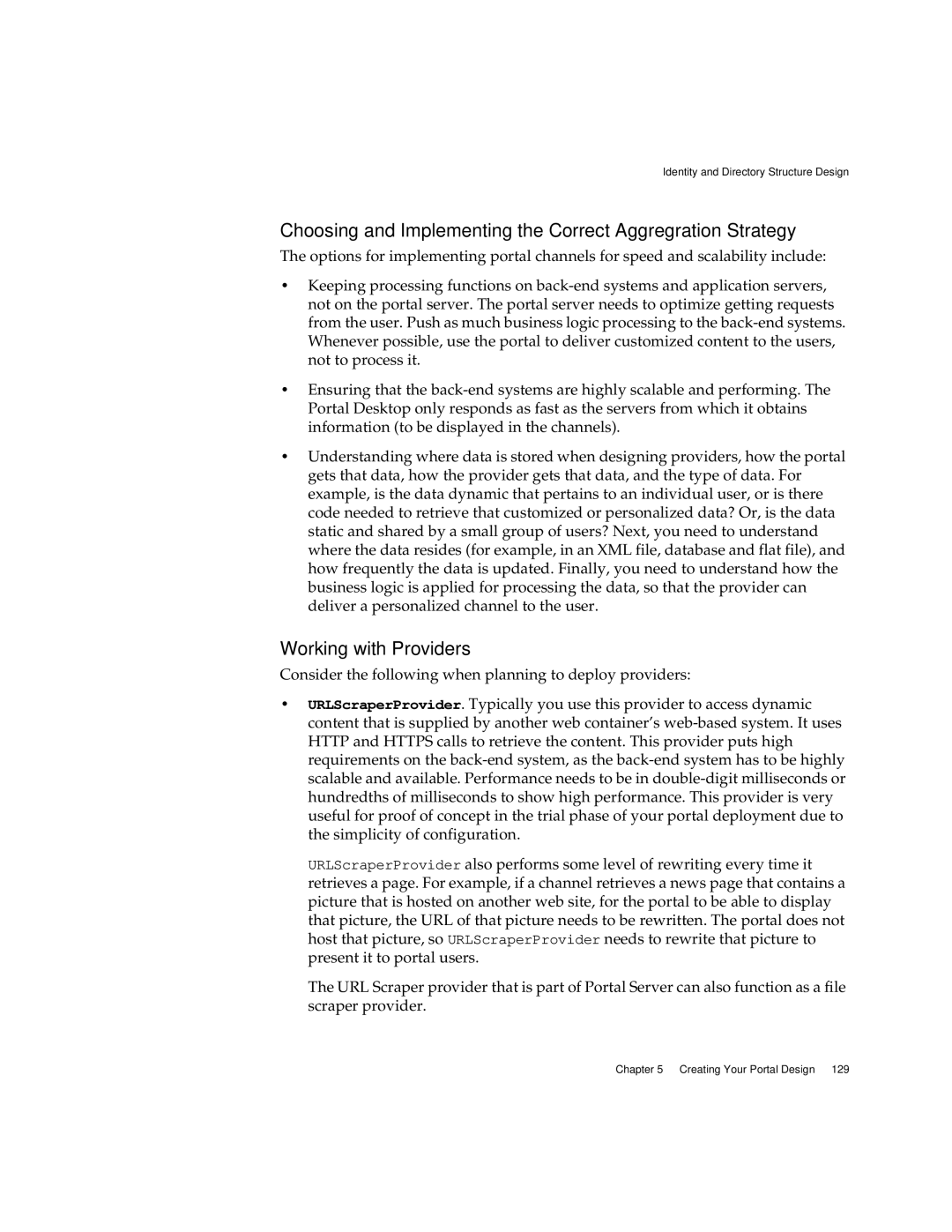Identity and Directory Structure Design
Choosing and Implementing the Correct Aggregration Strategy
The options for implementing portal channels for speed and scalability include:
•Keeping processing functions on
•Ensuring that the
•Understanding where data is stored when designing providers, how the portal gets that data, how the provider gets that data, and the type of data. For example, is the data dynamic that pertains to an individual user, or is there code needed to retrieve that customized or personalized data? Or, is the data static and shared by a small group of users? Next, you need to understand where the data resides (for example, in an XML file, database and flat file), and how frequently the data is updated. Finally, you need to understand how the business logic is applied for processing the data, so that the provider can deliver a personalized channel to the user.
Working with Providers
Consider the following when planning to deploy providers:
•URLScraperProvider. Typically you use this provider to access dynamic content that is supplied by another web container’s
URLScraperProvider also performs some level of rewriting every time it retrieves a page. For example, if a channel retrieves a news page that contains a picture that is hosted on another web site, for the portal to be able to display that picture, the URL of that picture needs to be rewritten. The portal does not host that picture, so URLScraperProvider needs to rewrite that picture to present it to portal users.
The URL Scraper provider that is part of Portal Server can also function as a file scraper provider.
Chapter 5 Creating Your Portal Design 129
